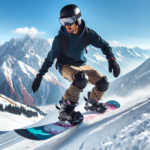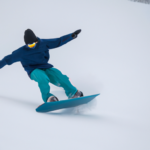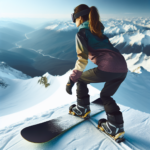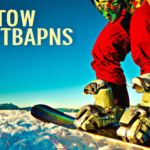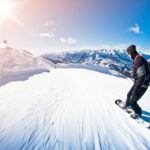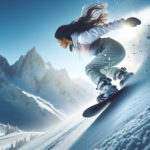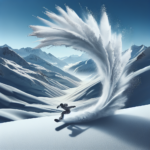Can you imagine yourself whisking down a snow-covered slope, immersed in the thrilling sensation of speed, control, and freedom? In this article on “How To Play Snowboarding?” you will unlock the secrets to mastering the alpine sport of snowboarding. Be prepared to embark on a captivating journey as you learn the basic techniques of snowboarding, such as balancing on your board, carving turns, and conquering the mogul fields. Whether you’re a complete novice or someone just looking to hone their skills, this article is your guide to shining on the snow-covered slopes!
Understanding the Basics of Snowboarding
Snowboarding, a thrilling winter sport, is all about carving your path through the pristine snow. Whether you are a seasoned skier looking for a fresh challenge or a complete novice seeking the thrill of a new outdoor activity, snowboarding can be an exciting adventure. However, just like mastering any new skill, it requires patience, practice, and understanding the underlying principles.
Knowing the Equipment
Being familiar with your snowboarding equipment is the first step towards a successful snowboarding journey. You will need a snowboard, boots, bindings, and suitable clothing that will keep you warm, dry, and safe. It’s also essential to use a helmet, goggles, and gloves/mittens. Understanding each piece of equipment’s function will help you make better choices in the selection process down the line.
Identifying Different Types of Snowboards
Snowboards come in various shapes, sizes, and designs, each adapted for a specific snowboarding style. For example, freestyle boards are lightweight and maneuverable, making them ideal for tricks. Freeride boards are designed for off-piste and mixed terrains, and all-mountain boards are versatile for all types of terrain. Knowing the types of snowboards can guide you in choosing one that aligns with your preferred snowboarding style.
Importance of Proper Clothing
Never underestimate the importance of dressing properly for snowboarding. Clothing that provides effective thermal insulation, is waterproof, and is breathable can make all the difference when you’re out there facing the elements. Layering is key, and it can be tailor-made to suit the day’s weather.
Preparing for Snowboarding
Physical Preparation
Snowboarding is physically demanding, and a certain level of fitness is necessary. Core strength, flexibility, and leg strength are all key components that will enhance your snowboarding experience. It’s advisable to start a fitness regimen centered on these areas before hitting the slopes.
Building Stamina and Strength
Cardio exercises like swimming, cycling, and running can help enhance your stamina. Similarly, strength training exercises, particularly for the legs, will help you maintain control of the board for longer periods. The stronger you are, the easier you’ll find snowboarding.
Understanding the Nature of Snow Conditions
Different snow conditions can significantly affect your snowboarding experience. Powder, packed powder, corn, slush, crust, and ice all have different characteristics which demand different techniques. A good understanding of snow conditions will help you adapt your movements and tactics.
Choosing the Right Snowboarding Gear
Selecting the Right Snowboard
Choosing a snowboard involves a few critical factors: your weight, height, boot size, riding style and personal preference. You can also opt for either a ‘Camber’ or ‘Rocker’ based on your skill level and the type of riding you plan on doing.
Finding Suitable Snowboarding Boots
Finding the right pair of boots goes beyond just the right size. They should be comfortable, offer proper support, and match your riding style and ability level. Your boots are one of the most essential parts of your snowboarding gear, so make sure you take the time to find the perfect pair.
Choosing Proper Snowboarding Outfit
Your snowboarding outfit should be breathable, insulated, and waterproof. Dress in layers and don’t forget accessories like gloves, goggles, and a helmet for safety.
Getting Started with Snowboarding
Identifying your Snowboarding Stance
The first step before you get on a snowboard is to determine your stance. If your left foot is in front, you have a regular stance. If your right foot is in front, your stance is considered ‘goofy’.
Practice of Strapping in and out of Snowboard
Familiarize yourself with your bindings, the devices that secure your boots to your snowboard. Learn how to strap in and out of your board, making sure the bindings are tight enough to hold your boots securely but not so tight that they restrict your movement
Learning the Basic Movement Controls
Start on flat terrain and practice skating and gliding to get the feel of your board. As you grow more comfortable, you can then practice basic controls like continuous heel edge and continuous toe edge.
Learning the Art of Balance and Control
Balancing on a Snowboard
Balance is crucial in snowboarding. Practice balancing on your board by standing on it on flat ground first. Once you’re comfortable, try balancing on gentle slopes.
Mastering Edge Control
Edge control is about managing the tilt of your board using your feet and legs. With good edge control, you can easily guide your board and change direction.
Practicing Weight Shifting
Weight shifting is all about moving your body weight to control your snowboard. By shifting your weight towards the front or back of the board, you can effectively control the board’s direction and speed.
Understanding and Mastering Basic Moves
Learning to Glide
Gliding comes after mastering balance and control. Here you propel yourself on flat terrain, and then slowly glide downhill while maintaining your balance.
Practice of Turning
Turning allows you to change direction and is key to navigating downhill. Practice on a gentle slope, using a combination of balance, edge control, and weight shifting.
Mastering the Art of Stopping
Being able to stop safely is essential. It involves positioning your board perpendicular to the slope and applying pressure to the board’s edge.
Advanced Snowboarding Techniques
Learning to Ollie
Ollie is a basic jump that forms the foundation for most tricks in snowboarding. It involves springing off the tail of your snowboard and lifting your front foot, then your rear foot in a jumping motion.
Carving Moves
Carving is a type of turn where the snowboard’s edge cuts into the slope to change direction. It involves a combination of balance, edge control, and weight shifting.
Jumping and Landing Techniques
Jumps are an integral part of snowboarding. You end up leaving the ground, and the landing techniques determine how you return. It requires a high degree of coordination, balance, and body control.
Snowboarding Safety Rules
Importance of Wearing Helmet
Helmet use cannot be overstressed. It protects your head and can potentially save your life in the event of a collision or fall.
Understanding Mountain Etiquette
Much like any public place, the slopes have their rules too. Knowing things like who has the right of way, how to ride and stop safely, and where to avoid stopping can help ensure everyone’s safety on the mountain.
Knowing How to Fall Safely
Falls are a common part of learning snowboarding. Learning how to fall safely can help you avoid serious injuries. The key is to relax your body during a fall and avoid using hands to break your fall.
Gaining Confidence through Practice
Importance of Regular Practice
Regular practice is the best part of mastering snowboarding. The more time you spend on your board, the more comfortable and skilled you’ll become.
Overcoming Fear of Heights and Speed
If you’re scared of heights or speed, start by snowboarding on gentle slopes and gradually move on to steeper ones as your confidence increases.
Gaining Confidence on Steeper Slopes
Don’t rush to tackle those steep slopes. Gain experience on easier terrain, building your confidence and skill set before you conquer the high, steep spaces.
Tips for a Better Snowboarding Experience
Staying Hydrated
Spending hours in the cold weather and high altitudes can dehydrate you quicker than you realize. Always carry a water bottle and remind yourself to drink frequently.
Following Your Pace
Everyone learns at their own pace. Don’t feel pressured to keep up with others. Snowboarding is about enjoying the experience, so go at a pace that you’re comfortable with.
Involving in Snowboarding Events and Groups
Getting involved in snowboarding events or joining local snowboarding groups can make your snowboarding experience even more enjoyable. You could learn from others, improve your skills, and make new friends who love snowboarding as much as you do.
In conclusion, snowboarding might seem challenging at first, but with an understanding of the equipment, good physical preparation, the right gear, and plenty of practice, you could find yourself cruising down the slopes with confidence. So, strap on your boots, board, helmet, and hit the slopes!
- What Snowboard Bindings Should I Get? - January 23, 2024
- What Size Screws For Snowboard Bindings? - January 23, 2024
- How To Snowmobile On Water? - January 23, 2024



